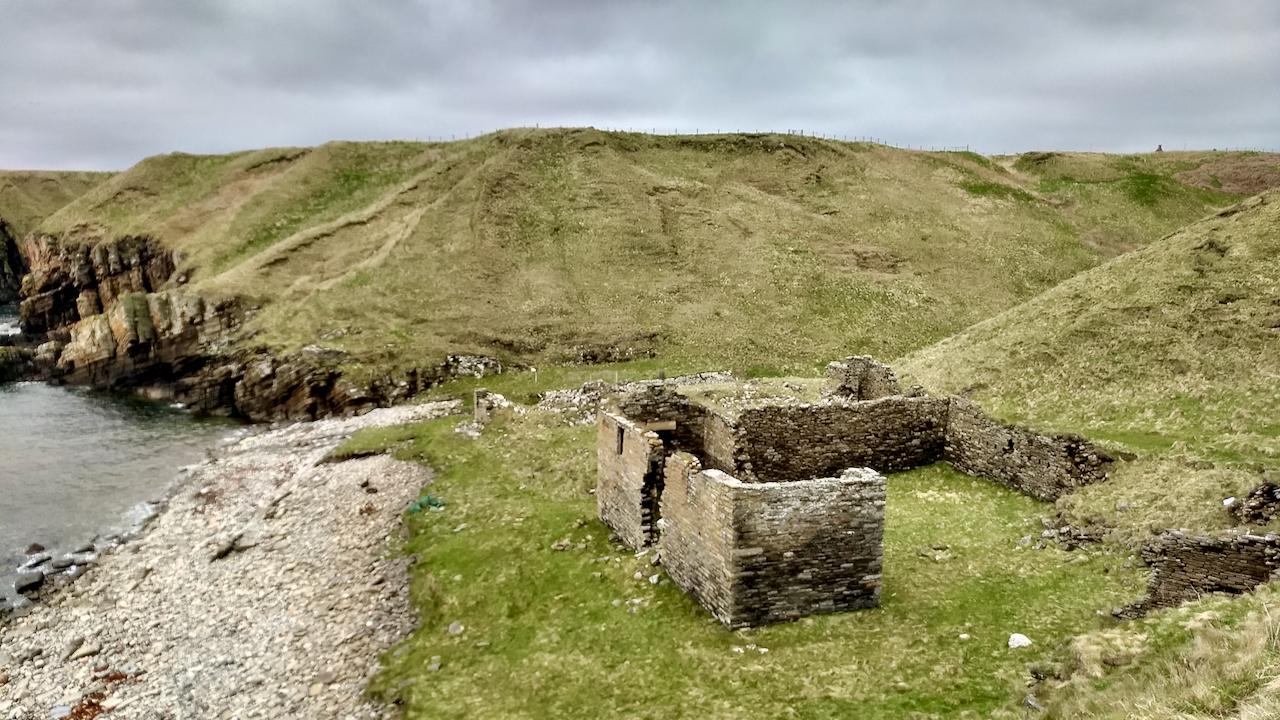During the 19th-Century, the Scottish herring industry was the largest in Europe. The fish was a Continental delicacy and easily caught off the east coast of Scotland. At the peak of the herring boom, there were as many as 30,000 boats involved1“Scottish Fisheries Museum – the Herring Boom.” Scotfishmuseum.org, 2021, www.scotfishmuseum.org/the-herring-boom.php. Accessed 13 May 2021..
In the early 19th Century, the British Government gave a bounty of £3.00 per ton to owners of herring boats larger than 60 tons, plus a bounty on all herring sold abroad. This, coupled with the coming of the railways as a means of more rapid transport, gave an opportunity to fishermen and agents to deliver their catches to markets much more quickly than in the past.
Herring was a fatty fish, and so had to be landed as quickly as possible and cured to prevent them rotting. Many fishing stations were built such as this one at Achastle-shore where young women and girls gutted and packed the fish in barrels ready for export. The fishermen would follow the migration of the herring from as far south as Yarmouth to Stornaway and the fisher-lassies would follow onshore. During the two World Wars the industry was severely interrupted and never recovered exasperated by a switch to whitefish and a decline in the herring catch.
Achastle-shore fishing station was built in 1810 by Patrick MacDonald and is considered of national importance2“Achastle-Shore, Fishing Station (SM13642).” Historicenvironment.scot, 2016, portal.historicenvironment.scot/designation/SM13642. Accessed 13 May 2021.. In 1821 the John O’Groat Journal reported that “the herrings brought in this morning by the fishermen of Barragill are uncommonly rich, and exactly of that description caught on the the west coast”3”Local Intelligence.” John O’Groat Journal, no. 281, 1 Apr. 1842, p. 3. British Library Newspapers, link-gale-com.ezproxy.is.ed.ac.uk/apps/doc/IS3245541299/GDCS?u=ed_itw&sid=GDCS&xid=71bd40f2. Accessed 13 May 2021..
- 1“Scottish Fisheries Museum – the Herring Boom.” Scotfishmuseum.org, 2021, www.scotfishmuseum.org/the-herring-boom.php. Accessed 13 May 2021.
- 2“Achastle-Shore, Fishing Station (SM13642).” Historicenvironment.scot, 2016, portal.historicenvironment.scot/designation/SM13642. Accessed 13 May 2021.
- 3”Local Intelligence.” John O’Groat Journal, no. 281, 1 Apr. 1842, p. 3. British Library Newspapers, link-gale-com.ezproxy.is.ed.ac.uk/apps/doc/IS3245541299/GDCS?u=ed_itw&sid=GDCS&xid=71bd40f2. Accessed 13 May 2021.

Leave a Reply